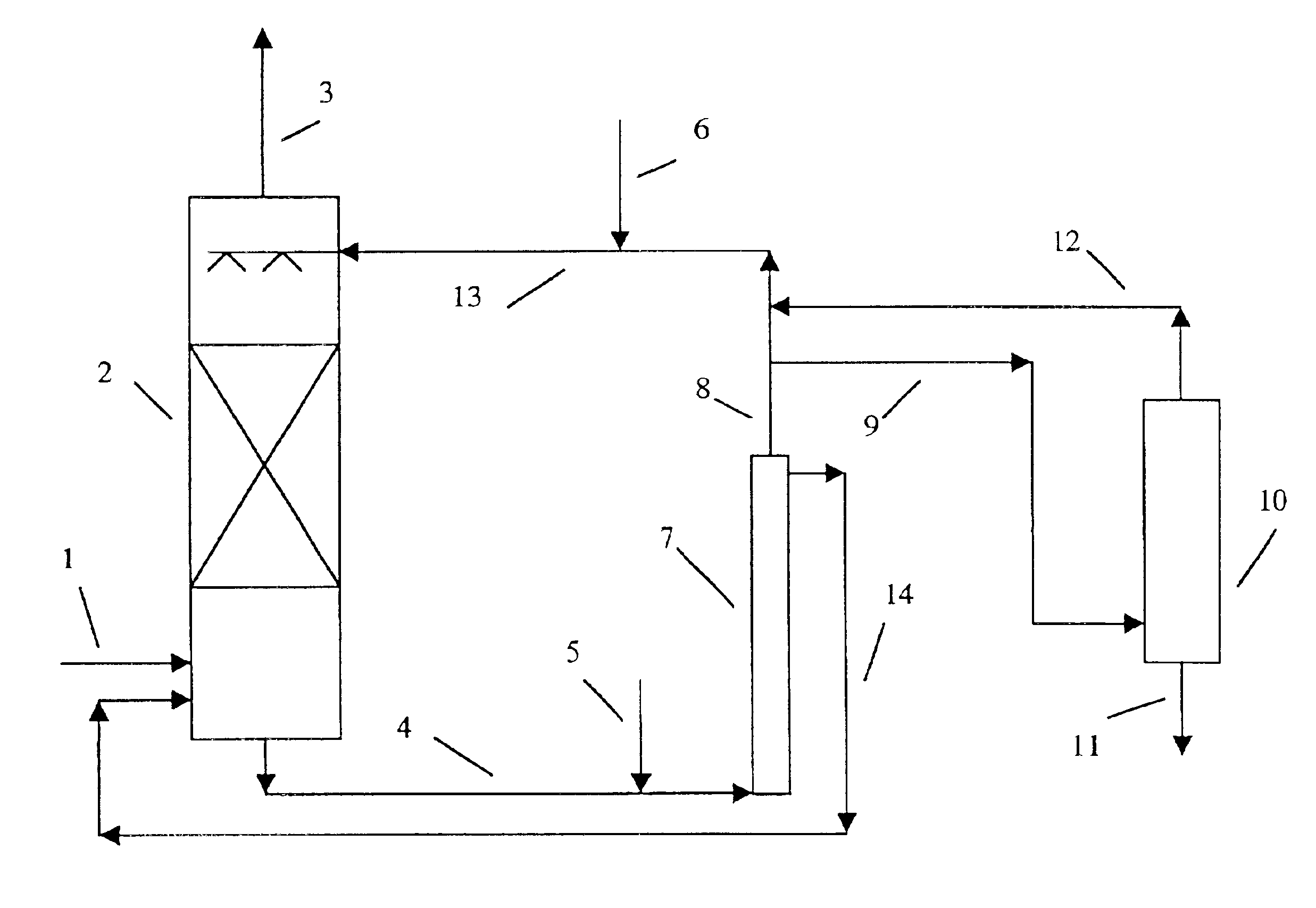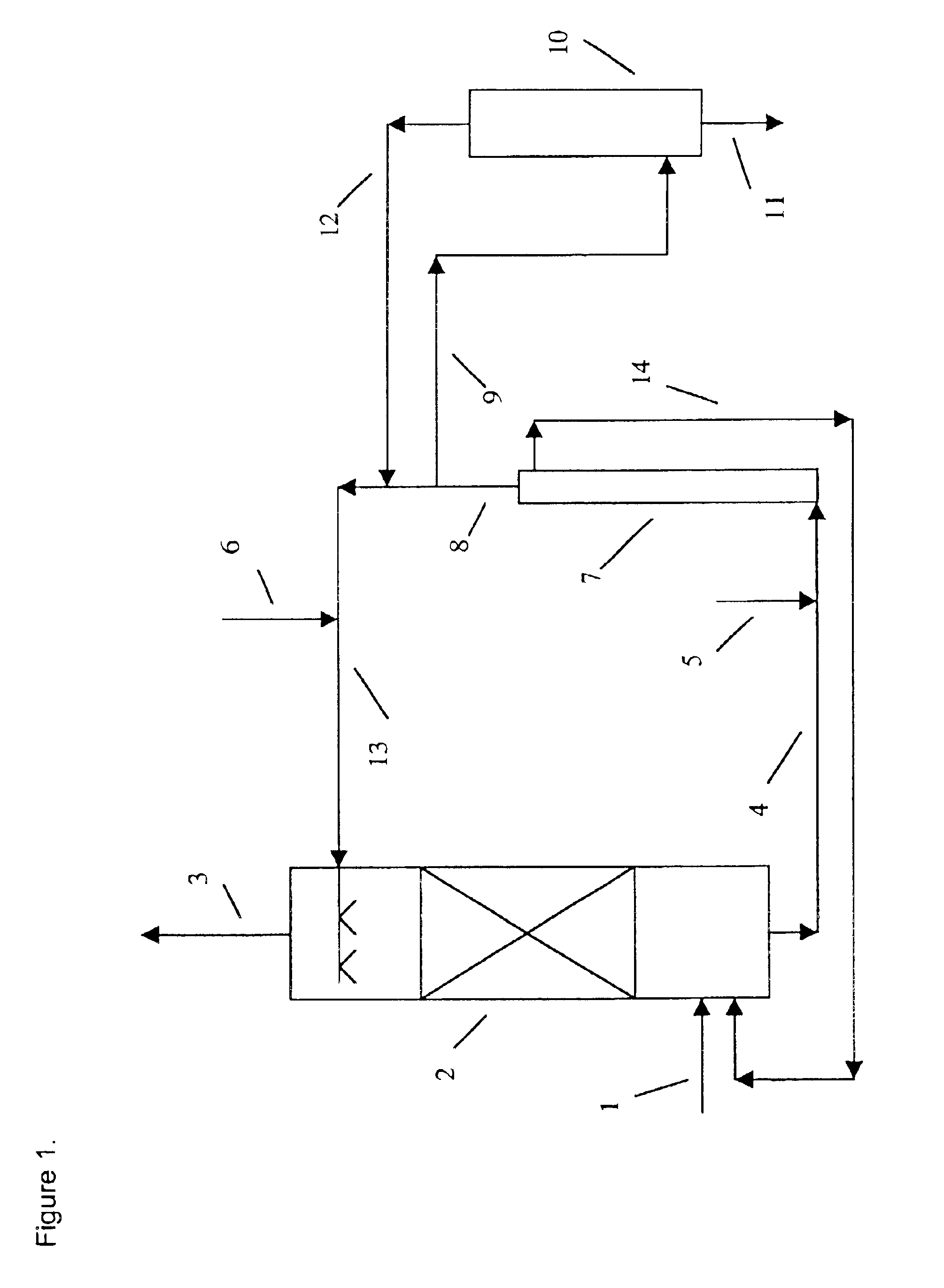Method and apparatus for NOx and SO2 removal
a technology of nox and so2 and removal method, which is applied in the field of methods and apparatus for the removal of no and no2, can solve the problems of large footprint, high capital and operating cost of the method, and difficulty in removing no from a gas, and achieve the effect of high efficiency no removal
- Summary
- Abstract
- Description
- Claims
- Application Information
AI Technical Summary
Benefits of technology
Problems solved by technology
Method used
Image
Examples
example
The functioning of the process is illustrated by the following example. Flue gas from a catalytic cracking unit regenerator which contained an average of about 140 ppmv of SO2 and about 100 ppmv of NO, with the balance essentially N2, CO2, H2O and about 2% of O2 was treated in a pilot unit. The unit had an absorber column packed with 8 feet of structured packing. The solvent residence time in the digester tank was about 45 minutes at a temperature of 85° C. The solvent was 0.075 molar in iron EDTA complex. Sodium sulfite or sodium pyrosulfite was added to the solvent for maintaining the solution sulfite concentration at the desired level and the pH at about 6.8. The solvent during the scrubbing experiment contained about 4.0% wt. sulfite anions (SO3=), 2.2% wt. sulfate, 5.5% dithionate and 3000 ppmw sulfamate, all present as the as the sodium salts. The absorber temperature was 85° C. At a gas flow rate of 15 cubic feet per minute and a solvent flow rate of one gallon per minute, 97...
PUM
| Property | Measurement | Unit |
|---|---|---|
| Temperature | aaaaa | aaaaa |
| Molar density | aaaaa | aaaaa |
| Substance count | aaaaa | aaaaa |
Abstract
Description
Claims
Application Information
 Login to View More
Login to View More - R&D
- Intellectual Property
- Life Sciences
- Materials
- Tech Scout
- Unparalleled Data Quality
- Higher Quality Content
- 60% Fewer Hallucinations
Browse by: Latest US Patents, China's latest patents, Technical Efficacy Thesaurus, Application Domain, Technology Topic, Popular Technical Reports.
© 2025 PatSnap. All rights reserved.Legal|Privacy policy|Modern Slavery Act Transparency Statement|Sitemap|About US| Contact US: help@patsnap.com



